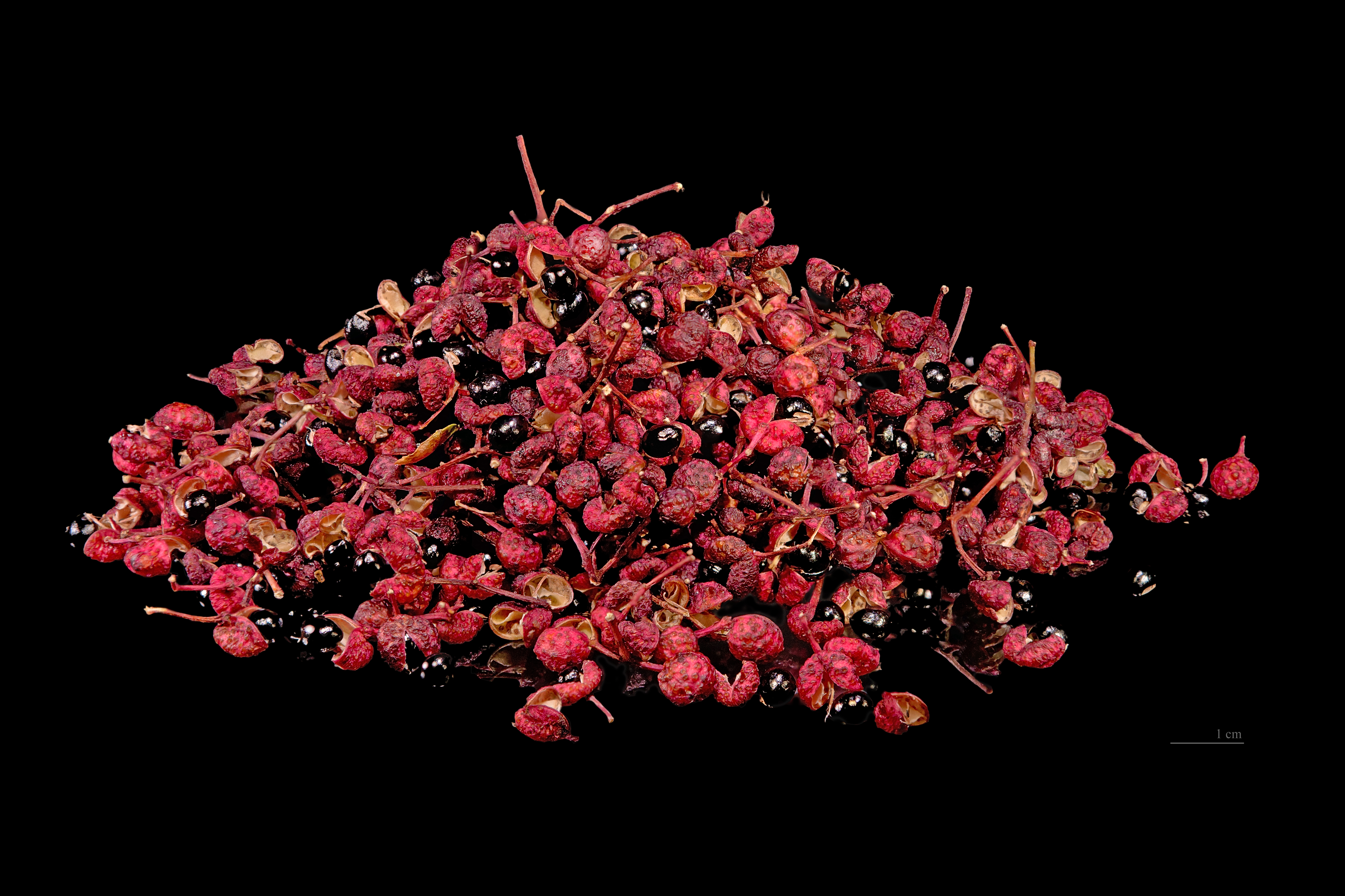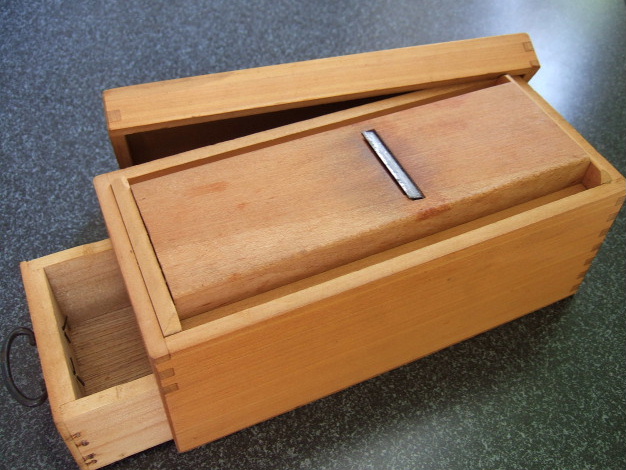|
Suribachi And Surikogi
''Suribachi'' (, lit. "grinding-bowl") and ''surikogi'' (, lit. "grind-powder-wood") are a Japanese mortar and pestle. These mortars are used in Japanese cooking to crush different ingredients such as sesame seeds. Form The ''suribachi'' is a pottery bowl, glazed on the outside and with a rough pattern called ''kushi-no-me'' on the unglazed inside. This surface is somewhat similar to the surface of the ''oroshigane'' (grater). The ''surikogi'' pestle is made from wood to avoid excessive wear on the ''suribachi''. Traditionally, the wood from the sanshō tree (Japanese prickly ash) was used, which adds a slight flavor to the food, although nowadays other woods are more common. The bowls have a diameter from 10 to 30 centimeters (3.9 to 11.8 inches). Use To use the ''suribachi'' the bowl is set on a non-slip surface, such as a rubber mat or a damp towel, and the ''surikogi'' is used to grind the material. Recently, plastic versions of the ''suribachi'' have also become p ... [...More Info...] [...Related Items...] OR: [Wikipedia] [Google] [Baidu] |
Mount Suribachi
is a -high hill on the southwest end of Iwo Jima in the northwest Pacific Ocean under the administration of Ogasawara Subprefecture, Tokyo Metropolis, Japan. The hill's name derives from its shape, resembling a '' suribachi'' or grinding bowl. It is also known as , since the volcanic gas and water vapor that rolls in from the summit, alongside the rest of the island, give the appearance of a smoking pipe when viewed from the sea. Joe Rosenthal's iconic World War II photograph, '' Raising the Flag on Iwo Jima'', depicting United States Marines raising an American flag, was taken at the mountain's peak during the Battle of Iwo Jima in 1945. Ammunition ship USS ''Suribachi'' was named after this mountain. Geology Geologically, the mountain is a cinder cone of andesite, formed by volcanic activity. It is thought that the mountain is a dormant vent to a still active volcano (designated Iō-tō, the name of the island as a whole). From 1889 to 1957, the Japanese government recorde ... [...More Info...] [...Related Items...] OR: [Wikipedia] [Google] [Baidu] |
Sanshō (spice)
''Zanthoxylum piperitum'', also known as Japanese pepper or Japanese prickly-ash, is a deciduous aromatic spiny shrub or small tree of the citrus and rue family Rutaceae, native to Japan and Korea. It is called () in Japan and () in Korea. Both the leaves and fruits ( peppercorns) are used as aromatics and flavorings in these countries. It is closely related to the Chinese Sichuan pepper, which comes from plants of the same genus. Names "Japanese pepper" ''Z. piperitum'' is called in Japan, but the corresponding cognate term in Korean, () refers to a different species: '' Z. schinifolium'', known as or in Japan. In Korea, ''Z. piperitum'' is called (). However, in several regional dialects, notably Gyeongsang dialect, it is also called () or (). "Japanese prickly-ash" has been used as the standard American common name. Varieties The variety ''Z. piperitum'' var. ''inerme'' Makino, known in Japan as are thornless, or nearly so, and have been widely cultivated for ... [...More Info...] [...Related Items...] OR: [Wikipedia] [Google] [Baidu] |
Food Grinding Tools
Food is any substance consumed by an organism for nutritional support. Food is usually of plant, animal, or fungal origin and contains essential nutrients such as carbohydrates, fats, proteins, vitamins, or minerals. The substance is ingested by an organism and assimilated by the organism's cells to provide energy, maintain life, or stimulate growth. Different species of animals have different feeding behaviours that satisfy the needs of their metabolisms and have evolved to fill a specific ecological niche within specific geographical contexts. Omnivorous humans are highly adaptable and have adapted to obtaining food in many different ecosystems. Humans generally use cooking to prepare food for consumption. The majority of the food energy required is supplied by the industrial food industry, which produces food through intensive agriculture and distributes it through complex food processing and food distribution systems. This system of conventional agriculture relies he ... [...More Info...] [...Related Items...] OR: [Wikipedia] [Google] [Baidu] |
List Of Japanese Cooking Utensils
The following items are common Japanese cooking tools used in preparing Japanese cuisine. For a list of general cooking tools see the list of food preparation utensils. Knives *'' Deba bōchō'': kitchen carver for meat and fish *'' Fugu hiki'', ''Tako hiki'', and '' yanagi ba'': ''sashimi'' slicers *'' Nakiri bōchō'' and '' usuba bōchō'': vegetable knives for vegetables *'' Oroshi hocho'' and '' hancho hocho'': extremely long knives to fillet tuna *'' Santoku'': general purpose knife influenced by European styles *'' Udon kiri'' and '' soba kiri'': knife to make udon and soba *'' Unagisaki hōchō'': eel knife Pots, pans, and bowls *'' Abura kiri'': drainer tray for oils *'' Agemono nabe'': deep frying pot *'' Donabe'': ceramic pot for use on an open flame *'' Hangiri'': rice barrel *'' Makiyakinabe'': rectangular pan for '' tamagoyaki'' *'' Mushiki'' and '' seiro'': steamers *'' Otoshi buta'': drop lid *'' Suihanki/rice cooker'': electric appliance for cooking rice *'' ''su ... [...More Info...] [...Related Items...] OR: [Wikipedia] [Google] [Baidu] |
Kitchen
A kitchen is a room (architecture), room or part of a room used for cooking and food preparation in a dwelling or in a commercial establishment. A modern middle-class residential kitchen is typically equipped with a Kitchen stove, stove, a sink with hot and cold running water, a refrigerator, and worktops and kitchen cabinet (furniture), cabinets arranged according to a modular design. Many households have a microwave oven, a dishwasher, and other electric appliances. The main functions of a kitchen are to store, prepare and cook food (and to complete related tasks such as dishwashing). The room or area may also be used for dining (or small meals such as breakfast), entertaining and laundry. The design and construction of kitchens is a huge market all over the world. Commercial kitchens are found in restaurants, cafeterias, hotels, hospitals, educational and workplace facilities, army barracks, and similar establishments. These kitchens are generally larger and equipped with big ... [...More Info...] [...Related Items...] OR: [Wikipedia] [Google] [Baidu] |
Iwo Jima
is one of the Japanese Volcano Islands, which lie south of the Bonin Islands and together with them make up the Ogasawara Subprefecture, Ogasawara Archipelago. Together with the Izu Islands, they make up Japan's Nanpō Islands. Although south of Tokyo on Honshu, Iwo Jima is administered as part of the Ogasawara Subprefecture of the Tokyo Metropolitan Government. Only in size, the island is still volcanic island, volcanic and emits sulfurous gases. The highest point of Iwo Jima is Mount Suribachi at high. Although likely passed by Micronesians who made their way to the Bonins to the north, Iwo Jima was largely ignored by the Spanish Empire, Spanish, Dutch Empire, Dutch, British Empire, British, and Empire of Japan, Japanese until a relatively late date after its 1543 rediscovery. The Japanese eventually colonized the island, administering it as the Iojima, Tokyo, Ioto or Iojima Village under Tokyo's jurisdiction until all civilians were forcibly evacuated to Honshu in July 1 ... [...More Info...] [...Related Items...] OR: [Wikipedia] [Google] [Baidu] |
Rice
Rice is a cereal grain and in its Domestication, domesticated form is the staple food of over half of the world's population, particularly in Asia and Africa. Rice is the seed of the grass species ''Oryza sativa'' (Asian rice)—or, much less commonly, ''Oryza glaberrima'' (African rice). Asian rice was domesticated in China some 13,500 to 8,200 years ago; African rice was domesticated in Africa about 3,000 years ago. Rice has become commonplace in many cultures worldwide; in 2023, 800 million tons were produced, placing it third after sugarcane and maize. Only some 8% of rice is traded internationally. China, India, and Indonesia are the largest consumers of rice. A substantial amount of the rice produced in developing nations is lost after harvest through factors such as poor transport and storage. Rice yields can be reduced by pests including insects, rodents, and birds, as well as by weeds, and by List of rice diseases, diseases such as rice blast. Traditional rice polyc ... [...More Info...] [...Related Items...] OR: [Wikipedia] [Google] [Baidu] |
China
China, officially the People's Republic of China (PRC), is a country in East Asia. With population of China, a population exceeding 1.4 billion, it is the list of countries by population (United Nations), second-most populous country after India, representing 17.4% of the world population. China spans the equivalent of five time zones and Borders of China, borders fourteen countries by land across an area of nearly , making it the list of countries and dependencies by area, third-largest country by land area. The country is divided into 33 Province-level divisions of China, province-level divisions: 22 provinces of China, provinces, 5 autonomous regions of China, autonomous regions, 4 direct-administered municipalities of China, municipalities, and 2 semi-autonomous special administrative regions. Beijing is the country's capital, while Shanghai is List of cities in China by population, its most populous city by urban area and largest financial center. Considered one of six ... [...More Info...] [...Related Items...] OR: [Wikipedia] [Google] [Baidu] |
Food
Food is any substance consumed by an organism for Nutrient, nutritional support. Food is usually of plant, animal, or Fungus, fungal origin and contains essential nutrients such as carbohydrates, fats, protein (nutrient), proteins, vitamins, or Mineral (nutrient), minerals. The substance is Ingestion, ingested by an organism and assimilated by the organism's Cell (biology), cells to provide energy, maintain life, or stimulate growth. Different species of animals have different List of feeding behaviours, feeding behaviours that satisfy the needs of their metabolisms and have evolved to fill a specific ecological niche within specific geographical contexts. Omnivore, Omnivorous humans are highly adaptable and have adapted to obtaining food in many different ecosystems. Humans generally use cooking to prepare food for consumption. The majority of the food energy required is supplied by the industrial food industry, which produces food through Intensive farming, intensive agricu ... [...More Info...] [...Related Items...] OR: [Wikipedia] [Google] [Baidu] |
Oroshigane
, also known as , are graters used in Japanese cooking. differ significantly from Western-style graters, as they produce a much finer grating. Traditionally, these graters were tin-coated copper plates with many small spikes gouged out of the metal, but no actual perforations through the metal. These graters are still considered the best and are used by professional chefs. For preparing wasabi and , graters with the surface made from shark skin were exclusively used. These have an even finer grating surface than a metal one; much closer to a sanding paper. However, nowadays non-professional cooks usually use much less expensive graters made from other metals, plastic, or ceramics. A modern variation of these graters also has perforations and may come with a matching box so that the grated material drops through the grater into the box. There are two versions of the grater in common use with different coarseness. The coarse grater is used to grate and similar foodstuffs ... [...More Info...] [...Related Items...] OR: [Wikipedia] [Google] [Baidu] |
:Category:Japanese Words And Phrases ...
{{Commons Words and phrases by language Words Words Words A word is a basic element of language that carries meaning, can be used on its own, and is uninterruptible. Despite the fact that language speakers often have an intuitive grasp of what a word is, there is no consensus among linguists on its ... [...More Info...] [...Related Items...] OR: [Wikipedia] [Google] [Baidu] |








